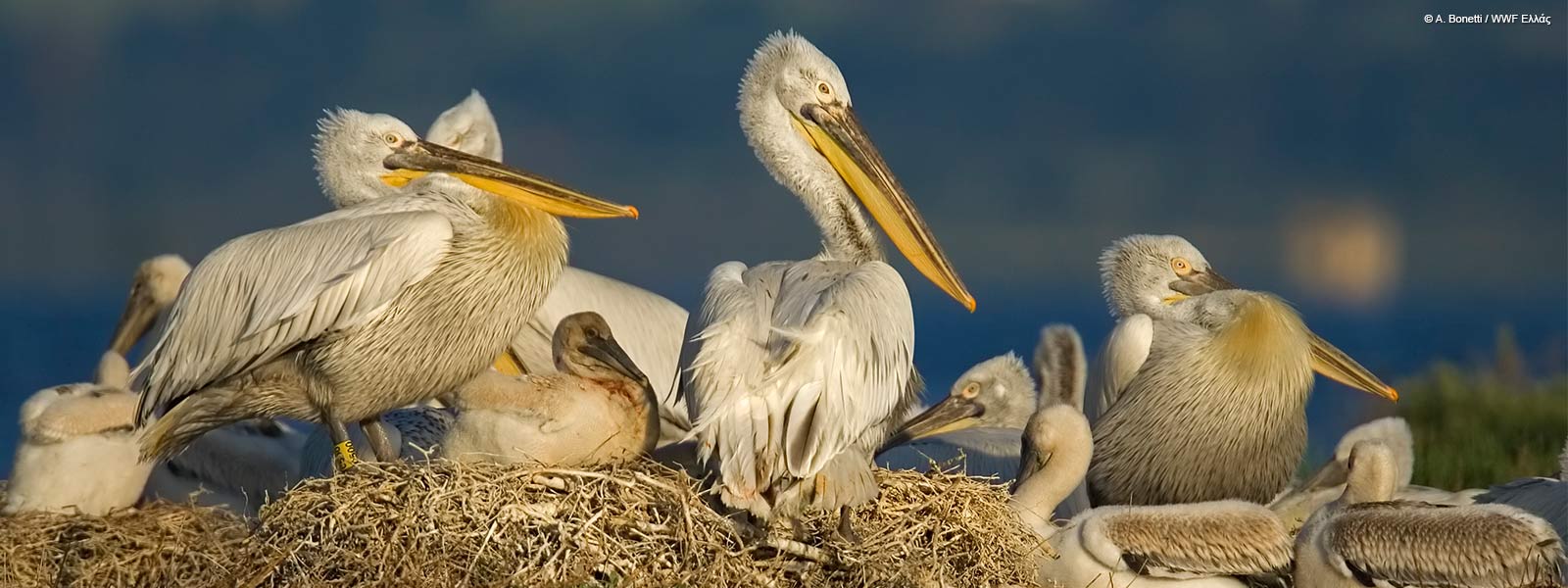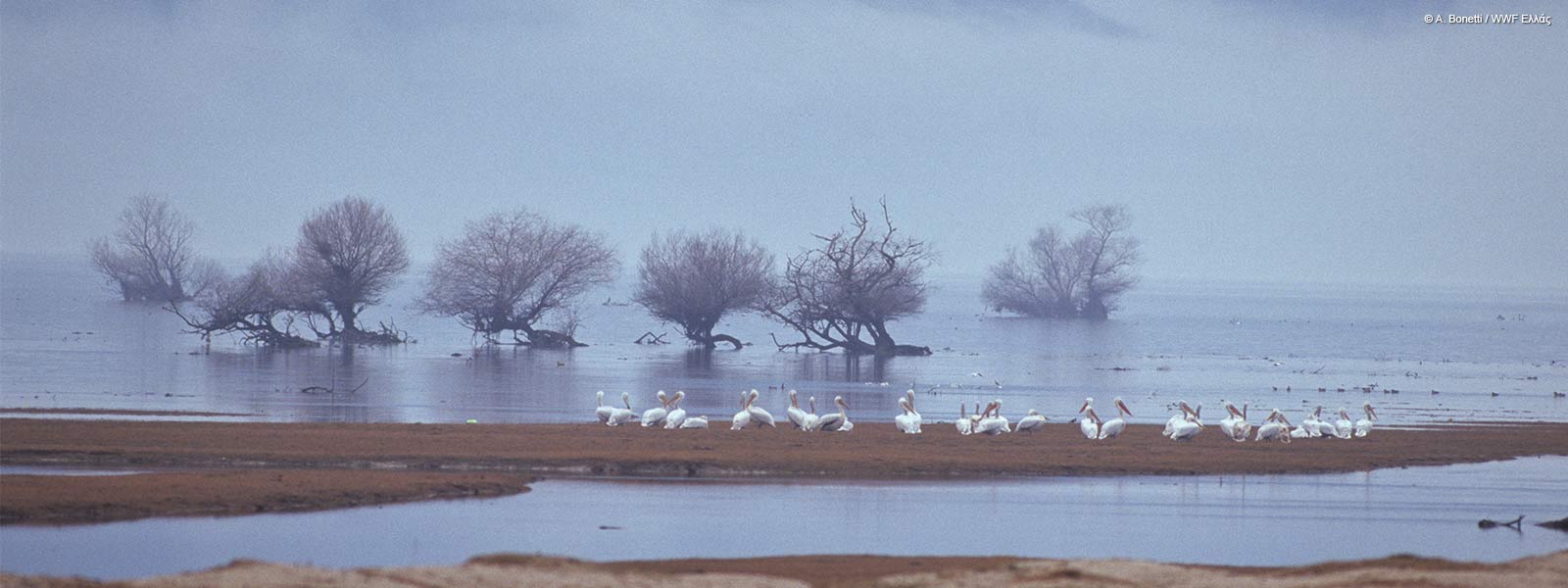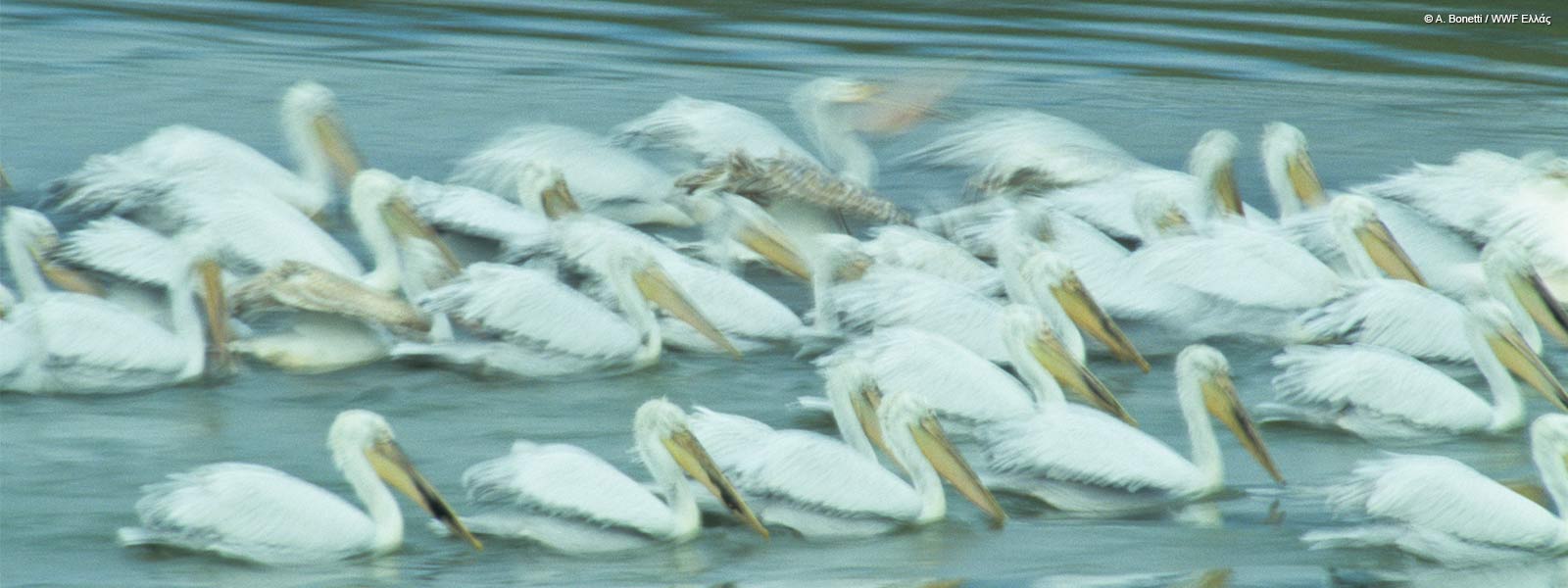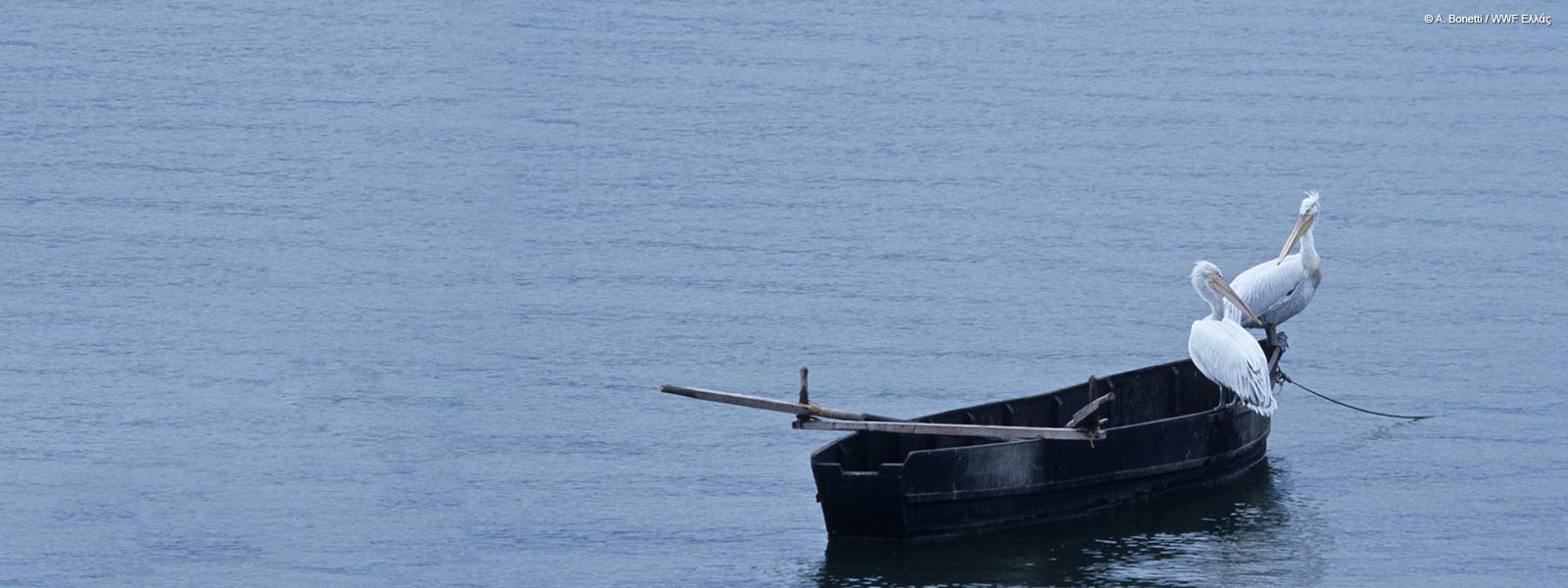The Life of the Dalmatian Pelican
From China to Greece, the Dalmatian pelican remains a globally threatened species with a total population of between 10,400 and 13,900 individuals. Lake Mikri Prespa is the favorite nesting site in the world of this beautiful species. Smaller populations live in the Amvrakikos Gulf and the Mesologgi Lagoon. The species has also recently been spotted in the reservoir of Lake Karla. Dalmatian pelicans used to fly and nest all over the country. However, they were ruthlessly hunted and nearly decimated during the ʼ60s and ʼ70s with the encouragement of the state, which classified them as a particularly “harmful prey”.
When the international program for the Dalmatian pelican’s conservation was launched in Prespa, coordinated by Alain Crivelli, the species was listed as endangered, its population ranging from about 40 to 165 pairs. Today, after over twenty years of unremitting efforts and with the decisive contribution of WWF Greece, Prespa holds the largest colony of the species in the world with more than 1,200 pairs! Nowadays, the species is expressly protected by law.
Life under Threat
The main threat to Dalmatian pelicans in Greece is human disturbance of the colonies during breeding season. Illegal hunting and power line collisions are also important human-generated factors that contribute to pelican mortality, particularly during migration season. In addition, increasing installation of wind turbines on mountain ridges is a possible threat to all large birds and Dalmatian pelicans in particular because they regularly fly long distances during breeding season moving between different wetlands to cover their increased need for food.
The life We Protect
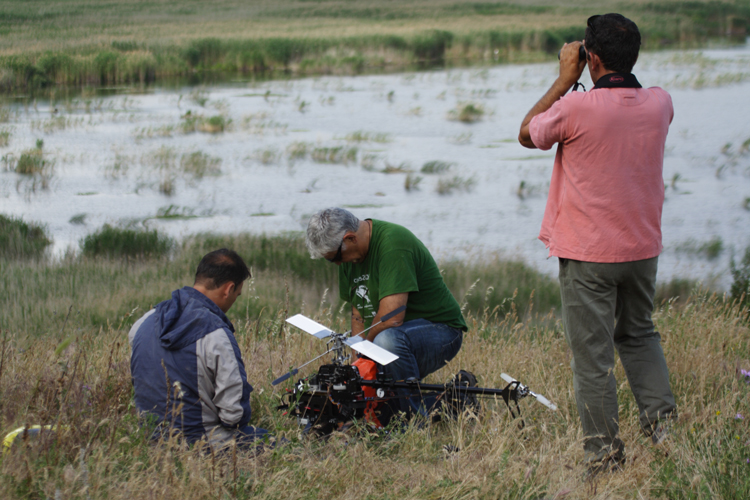
© G. Catsadorakis / WWF Greece
WWF Greece supports the Society for the Protection of Prespa in the valuable work for the conservation of the Prespa basin. It is now imperative that measures be intensified—with the State’s active participation—to meet the need to comprehensively conserve and properly manage Greek wetlands, to safeguard the species’ colonies and disseminate information in the areas that host them and to effectively control illegal hunting especially during migration season.
Share this




